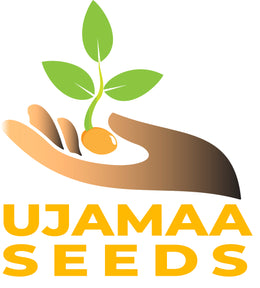Nanticoke Squash
Curcubita maxima
Seeds per packet ~ 20
Germination 96% Oct 2024 Packed for 2025
Origins and History
Cucurbita maxima, one of the five domesticated squash species, has its origins in South America, specifically in the Andean region encompassing present-day Bolivia, Argentina, and Peru. Archaeological evidence places its domestication as early as 4000–3000 BCE, where Indigenous peoples cultivated it alongside other early crops such as maize and beans. Early forms of C. maxima were likely smaller and less palatable, but through centuries of selective breeding, farmers developed larger, sweeter, and more varied forms suited for different climates and uses.
Cultural and Historical Significance
Throughout pre-Columbian civilizations, C. maxima was not merely a food source but an integral component of agricultural systems and spiritual life. Its seeds were roasted as snacks, the flesh was stored as a starchy vegetable, and the hard shells of mature fruits were used as containers. The species diversified into numerous regional landraces, each adapted to local environments and traditions. Following European contact in the 16th century, C. maxima spread worldwide, finding particular favor in Asia, Europe, and Africa, where it became a staple in both home gardens and markets.
The Nanticoke Squash is an Indigenous heirloom variety with deep roots in the mid-Atlantic region of the United States. It is associated with the Nanticoke people, a Native community whose ancestral homelands span present-day Delaware and Maryland. Like many heirloom squashes, it represents centuries of careful seed stewardship and adaptation to local soils and climates. The Nanticoke Squash is both a cultural food and a symbol of resilience, connecting modern growers with the agricultural traditions of the Eastern Woodlands tribes.
Appearance and Characteristic
sThis squash is a type of Cucurbita maxima, producing medium to large fruits with a rounded or slightly elongated shape. The rind varies in shades of muted green, often mottled or speckled, and cures to a hard, protective shell that ensures long storage. The flesh is a rich golden orange, dense and sweet, with a fine-grained texture. Plants produce large, sprawling vines with broad leaves and vigorous growth typical of maxima squashes.
Culinary Uses
The Nanticoke Squash is valued for its rich, sweet flesh that becomes tender when roasted or baked. It is excellent in traditional dishes such as soups, stews, and pies, and its flavor deepens with storage. Because of its dry, fine texture, it can also be mashed, pureed for custards, or cubed and roasted for savory meals. Its versatility makes it a true “multi-purpose” squash, suitable for both hearty winter meals and festive holiday recipes.
Growing Tips
This squash thrives in USDA Hardiness Zones 3–9, preferring warm soil and long summer growing seasons. Sow seeds directly outdoors once the soil has warmed to at least 70°F, planting 1 inch deep. Space hills 3–4 feet apart, with 2–3 seeds per hill, thinning to the strongest plants. The vines require ample room to sprawl, so allow 8–10 feet between rows. Mulching helps retain soil moisture and suppress weeds. Nanticoke Squash, like other heirloom varieties, benefits from fertile, well-drained soil rich in organic matter and full sun exposure.
Harvesting Guidance
Fruits are ready to harvest in about 100–110 days from sowing, once the rind has hardened and the stem begins to dry and brown. Use pruners or a sharp knife to cut the squash, leaving a few inches of stem attached to extend storage life. Cure the harvested fruits in a warm, dry, and well-ventilated area for 10–14 days to toughen the skin. When properly stored in a cool, dry place, Nanticoke Squash can keep for several months, making it an important winter food source just as it was for the Indigenous communities who first cultivated it.




